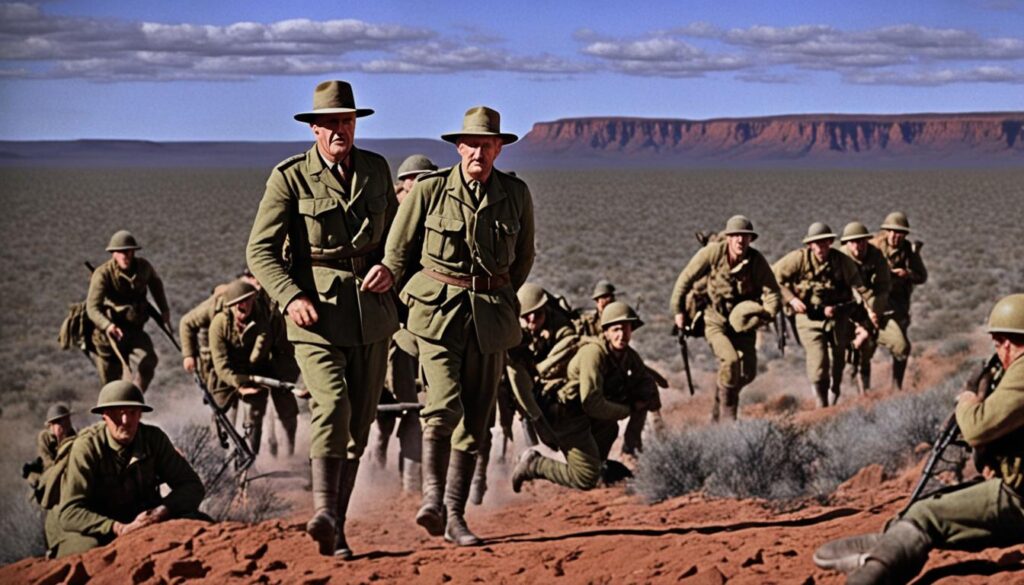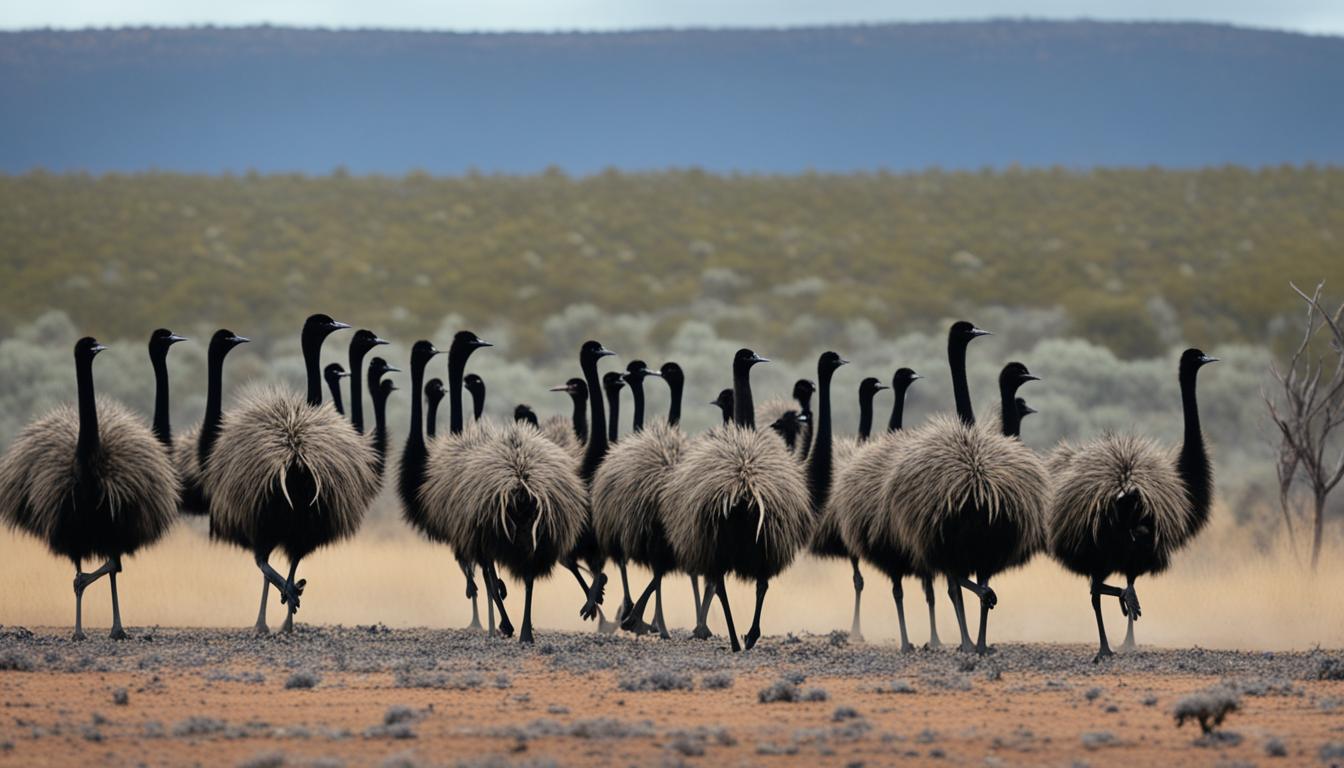In 1932, Australia faced an unusual foe: emus. The Great Emu War was a quirky chapter in Australian history. It happened in Western Australia during the Great Depression. The Australian military fought against large flightless birds over wheat crops.
Major Gwynydd Purves Wynne-Aubrey Meredith led the emu culling operation. With about 20,000 emus causing trouble on farms, the government acted. They sent soldiers with Lewis guns to protect farmers in the Campion district.
Key Takeaways
- The Great Emu War occurred in Western Australia in 1932
- It was a military operation to reduce crop damage by emus
- The campaign lasted from November 2 to December 10, 1932
- Soldiers used Lewis guns and 10,000 rounds of ammunition
- The operation was largely unsuccessful, with only 986 emus confirmed killed
- This event highlighted the challenges of wildlife management during the Great Depression
The Origins of Australia’s Emu War
In 1932, Australia faced an unusual challenge that would shape its environmental history. The roots of the Emu War trace back to the aftermath of World War I. Veterans received land in Western Australia for farming as part of a soldier settlement program. These areas often had marginal agricultural value, setting the stage for future conflicts.

The Great Depression hit in 1929, causing wheat prices to plummet. Farmers struggled to make ends meet. Their troubles multiplied when about 20,000 emus migrated to the coastal regions after breeding season. These large birds found the cultivated lands ideal for foraging. They consumed crops, damaged fences, and disrupted farm operations.
Desperate farmers turned to the government for help. Sir George Pearce, the Minister of Defence, made a decision that would forever change human-animal interactions in the region. He agreed to deploy military personnel armed with machine guns to address the emu problem. This decision marked the beginning of what would become known as the Great Emu War.
The events that unfolded would become a unique chapter in Australia’s history, highlighting the complex relationship between humans and wildlife. The Emu War serves as a reminder of the unforeseen consequences that can arise from well-intentioned policies like soldier settlement schemes.
Military Operation Against the Emus
The Royal Australian Artillery started a campaign against emus on November 2, 1932. Major Meredith, Sergeant McMurray, and Gunner O’Halloran led the charge. They used Lewis guns and lots of ammo, thinking they’d win easily.
At first, the emus were hard to catch. They ran away fast, avoiding the bullets. The soldiers tried different ways to catch them, like setting traps near water. They even put Lewis guns on trucks to keep up with the birds. But the emus kept hiding.
Major Meredith said the emus were really tough. He said they moved like Zulus and were as hard as tanks. The military’s plans didn’t work well. There was a short break in the action on November 8. Then, they tried again on November 13 with some new strategies.
This odd battle showed the tough challenges the Australians faced. The emus were too fast and agile, making it hard for the soldiers. This made the military think differently about dealing with wildlife.
Aftermath and Legacy of the Great Emu War
The Emu War ended on December 10, 1932, with not much success. Farmers asked for more military support later, but got a no from the government. They started a bounty system for controlling emus instead. This method proved effective, with over 57,000 bounties claimed in just six months of 1934.
The story of the emu conflict spread around the world. Some nature lovers in the UK spoke out against killing the birds. Australia then focused on long-term farm protection by using a fence. They adapted the 1,200km State Barrier Fence to stop emus from migrating. However, this move raised questions about its effect on native animals.
The Emu War is now seen as both a joke and a fascinating event. It highlights the delicate balance between protecting farms and preserving wildlife. Today, it reminds us of Australia’s unique struggles in managing its vast, wild lands.

Leave a Reply